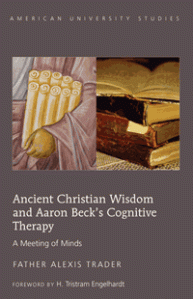Christ’s Ascension and a New Vision of our Life
 The period between Ascension and Pentecost provides us with a glimpse of how we are to deal with the transitory nature of this life with its daily pressures, unavoidable disappointments, and prolonged suffering. The Feast of the Ascension is one of the twelve great feasts of the year in the Orthodox Church. It is an important feast not so much in the commemoration of the Lord’s bodily departure from this earth, for He Himself promised us that He would not leave us orphaned and that He would send us His Holy Spirit, the Comforter, the Spirit of Truth Who is everywhere present and fills all things. Rather, the Feast of the Ascension is so very important, because it is a revelation of what is in store for us if we remain faithful to Him. No other feast reveals so clearly the inner thought of our heavenly Father concerning us as does the feast of the Ascension of our Lord. As Saint Justin Popovich writes, “human nature was created in order to live eternally beyond the heavens at the right hand of God the Father in hypostatic union with the eternal Son of the Father. The eternal divine significance of human nature is fully revealed and perfectly realized in the ascension of the Savior into heaven. By the ascension of his human nature into heaven, the Lord has proved in a most obvious way his immense love for man: he has demonstrated that all the theanthropic economy of salvation of the human race had no other goal than making it possible for human nature to be eternally united with God and for this very reason was created in the image of God.”
The period between Ascension and Pentecost provides us with a glimpse of how we are to deal with the transitory nature of this life with its daily pressures, unavoidable disappointments, and prolonged suffering. The Feast of the Ascension is one of the twelve great feasts of the year in the Orthodox Church. It is an important feast not so much in the commemoration of the Lord’s bodily departure from this earth, for He Himself promised us that He would not leave us orphaned and that He would send us His Holy Spirit, the Comforter, the Spirit of Truth Who is everywhere present and fills all things. Rather, the Feast of the Ascension is so very important, because it is a revelation of what is in store for us if we remain faithful to Him. No other feast reveals so clearly the inner thought of our heavenly Father concerning us as does the feast of the Ascension of our Lord. As Saint Justin Popovich writes, “human nature was created in order to live eternally beyond the heavens at the right hand of God the Father in hypostatic union with the eternal Son of the Father. The eternal divine significance of human nature is fully revealed and perfectly realized in the ascension of the Savior into heaven. By the ascension of his human nature into heaven, the Lord has proved in a most obvious way his immense love for man: he has demonstrated that all the theanthropic economy of salvation of the human race had no other goal than making it possible for human nature to be eternally united with God and for this very reason was created in the image of God.”
The Gospel of Saint John recounts for us that the disciples were filled with “great joy” upon His ascension for they had been illumined by their faithful obedience and devotion to Christ in the greatest of trials and the greatest of joys. They were no longer blind to the spiritual realities that lie hidden to mere physical sight. I alluded to this in the last blog post concerning the man born blind, “In cognitive therapy, there is much talk about modifying thought patterns as well as reconstructing thought patterns, but in the case of our relationship with God, we need not modified or reconstructed ways of thinking, but entirely new ways of thinking, new eyes with which to see, a new mind with which to perceive. For this new creation to be effected, we need to be open to Christ’s action upon our spirit and to be willing to obey whatever He asks of us, even if it doesn’t make a lot of sense, such as putting mud on our eyes and going to wash in a pool. Obedience creates new eyes. And new eyes can enable us to see Christ.”
This isn’t a mere modification of thought patterns, but a new way of seeing, a new way of being, and an entirely new life in Christ made possible by the assurance of a love greater than the universe that surrounds us and closer to us than our heart of hearts. The new way of seeing and being that the love of Christ opens to us also places before us a destination more exalted than anything we could dare to imagine, a place close to God forevermore. This new and exalted goal that Christ sets before us and this impossible love that makes it all possible provides us with a new way of looking down the path of painful and difficult moments of life. With new vision, with a sense of eternity in the presence of the ephemeral, with a sense of the Resurrection and Ascension in the presence of every Cross, we see life’s problems in another light that is hopeful, redemptive, and full of God’s love. This new way of seeing is what enabled Saint Paul to proclaim, “I can do all things through Christ which strengtheneth me.” (Phil. 4:13) This is our inheritance. Let us not squander it by fixing our gaze solely upon earthly things and earthly problems, but like the disciples, let us lift up our eyes to behold the glorious Resurrected, Ascended Lord of Glory, the conqueror of death, Who leads us even now, even in the midst of our many struggles in life, to our ultimate homeland with Him forever.




Amen!